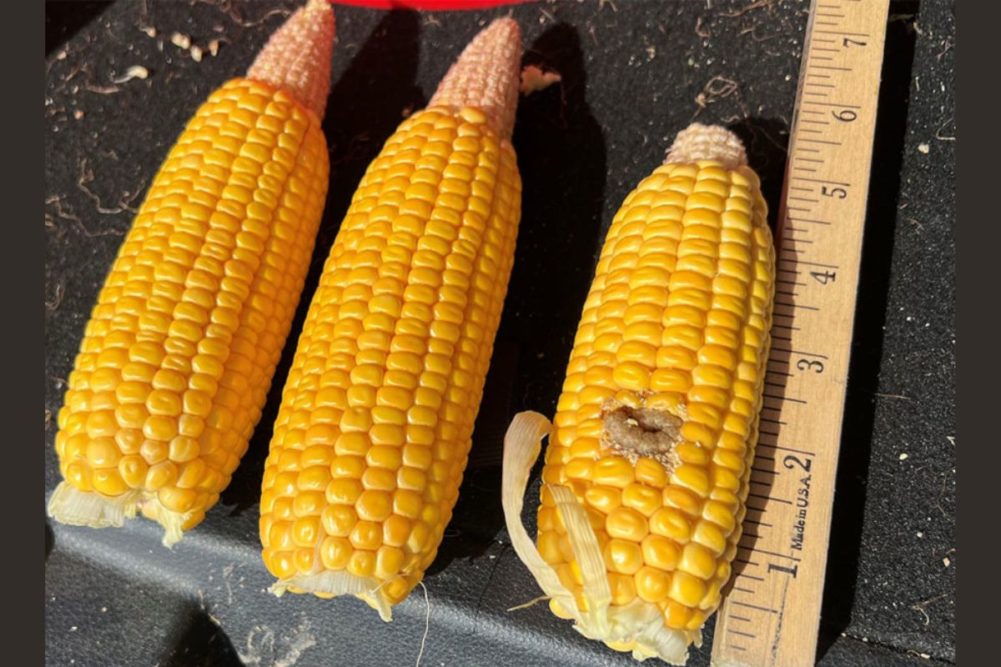KANSAS CITY, MISSOURI, US — Soaring temperatures, stifling humidity and the pungent smell of rotting vegetation sounds more like an excursion through a rainforest jungle, but these were the conditions experienced by some of the approximately 100 scouts that participated in the recent Pro Farmer Midwest crop tour.
Split into two groups, half of the scouts began their journey in Sioux Falls, South Dakota, US, on Aug. 21, while the other half originated in Dublin, Ohio, US. On the four days following, the scouts divided up into several vehicles, and set out on varying predetermined routes. Covering roughly 70% of the US Corn Belt, scouts stopped every 10 to 15 miles to randomly sample and assess the region’s corn and soybean crops and calculate plausible yields for each state using technical formulas and qualitative inputs.
The western half covered sections of South Dakota, Nebraska, Iowa and western Minnesota while the eastern scouts coursed through Ohio, Indiana, Illinois and eastern Minnesota. Both groups connected on the evening of Aug. 24, the fourth and final day of the tour, at the Mayo Civic Center in Rochester, Minnesota, US, to review their data and share overall impressions of this year’s corn and soybean crops.
The week’s intense temperature spikes and its impact on the crops were a focal point, especially for the western half of the tour. In the middle of a densely populated corn field, temperatures can jump another 20°. Several scouts noted the aroma of silage as they gathered corn samples in Nebraska, indicating the crop had passed the point of maturation and was beginning to rot.
“In my 20-plus years of doing this crop tour, we’ve never gone through anything like this,” one scout shared.
Variability was the oft used word to describe the samples collected from most states. Scouts noticed healthy fields boasting 200-plus bushels per acre corn yields and lush soybean plants while other areas just a few miles down the road had corn fields filled with a silage aroma and dried shanks with hanging ears and soybean plots showing evidence of white mold and sudden death. Hail and wind damage was evident in many corn fields as was tar spots, which showed up for the first time on the last leg of the tour in Minnesota.
While farmers and crop tour veterans continually reaffirmed this crop was much better than last year’s, they also acknowledged the crops needed timely rains to adequately finish out the season. For some fields, however, it was too late.
“Some of these crops aren’t drying down, they’re dying down,” said Chip Flory, host of AgriTalk radio and director for the western half of the crop tour, adding that producers should prepare for an early harvest. “It’s just not good finishing weather. You want to crock pot the crop to the finish, but it’s in the broiler now.”
As expected, dryland crops struggled more than irrigated fields. And with weather outlooks not calling for any near-term moisture events, irrigation was likely the single tool available to maximize yields; otherwise, some crops may lose up to 20% of their yield potential, according to one analyst on the tour.
“This is the crispiest dryland we’ve ever run into,” Flory said.
While scouting through Nebraska, he noticed many of the state’s soybean fields were turning various shades of green and yellow with spots of brown throughout.
“These 10 days are critical to the soybean crop, and if we’re in agreement that a little rain can help the crop then we’ve also got to agree that if we get the kind of conditions that we’re expecting in the next three days then it’s going to hurt this crop,” he said.
There was a major bright spot on the tour, however. Scouts on the eastern leg of the crop tour noted excellent samples throughout Ohio.
“Ohio is a hit or miss state, and it looks like they’ve got more hits than misses from everything I’ve seen so far,” said Brian Grete, editor at Pro Farmer and tour director for the eastern half of the crop tour.
On Aug. 25 Pro Farmer released its final estimates for the 2023 US corn and soybean crops after aggregating the raw data from a record number of samples pulled on the tour this year while factoring in other inputs such as crop maturity and acreage adjustments. They pegged the 2023 US corn yield at 172 bushels per acre, down 1.8% from 175.1 bushels per acre projected by the US Department of Agriculture on Aug. 11. Pro Farmer estimated the 2023 US soybean yield at 49.7 bushels per acre, down 2.3% from the USDA’s August projection of 50.9 bushels per acre.




